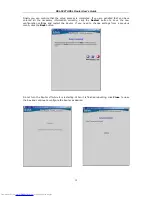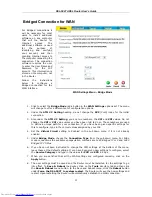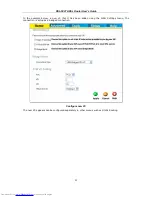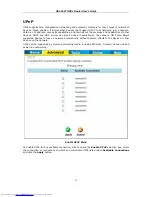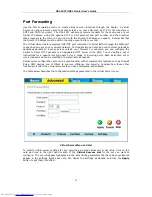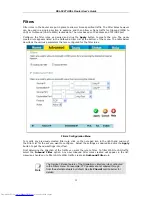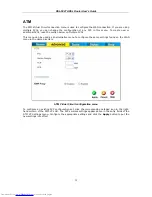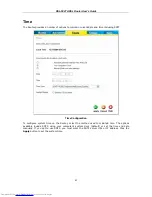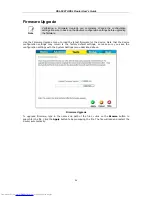
DSL-502T ADSL Router User’s Guide
To configure a virtual server set, define the following settings in the Virtual Server configuration
menu located in the top half of the browser window.
Parameter
Description
Rule Name
Provide a name for the rule. This name will not appear in the list below,
however it may be useful if you later need to edit the settings for the rule.
Rule names are optional.
Private IP
This is the IP address of the server on your LAN that will provide the
service to remote users. The Private IP address is used to direct the service
to a specific computer on your private network such as an FTP, Email or
public web server. Type in the IP address of the server used for the service
being configured here.
Protocol
You can select the transport protocol (TCP or UDP) that the application on
the virtual server will use for its connections. Select one of the following
options from the pull-down menu to define a TCP, UDP or Both. The choice
of this protocol is dependent on the application that is providing the
service. If you do not know which protocol to choose, check your
application’s documentation.
Port Start/Port
End
Configure a range of ports for forwarding. Type the lowest numbered port
in the range in the Port Start space. Type the highest numbered port in the
Port End space. For a single port, just enter the same number in both
spaces.
Virtual server port redirection must be used with a specified server or
computer on the LAN (identified by the Private IP address).
Port Map
This is the local port being forwarded to from the Port Start/Port End
port(s). Keep in mind that if you use a non-standard port number for an
application with a reserved UDP/TCP port, some additional configuration
may be required for the servers or workstations using the application on
the LAN side.
Click the Apply button to put the new virtual server configuration set or modification into effect.
Any server sets configured in the menu will appear in the Virtual Server List with the new settings.
The Router must save the new settings and reboot before the new virtual server configurations are
applied.
To remove any configuration set from the Virtual Server List, click on the trashcan icon for set you
want to delete.
Note
Some applications require multiple TCP or UDP ports to function properly.
Applications such as Internet gaming, video conferencing, and Internet telephony
are some examples of applications that often require multiple connections. These
applications often conflict with NAT, and therefore require special handling. See the
discussion of DMZ configuration below.
33

